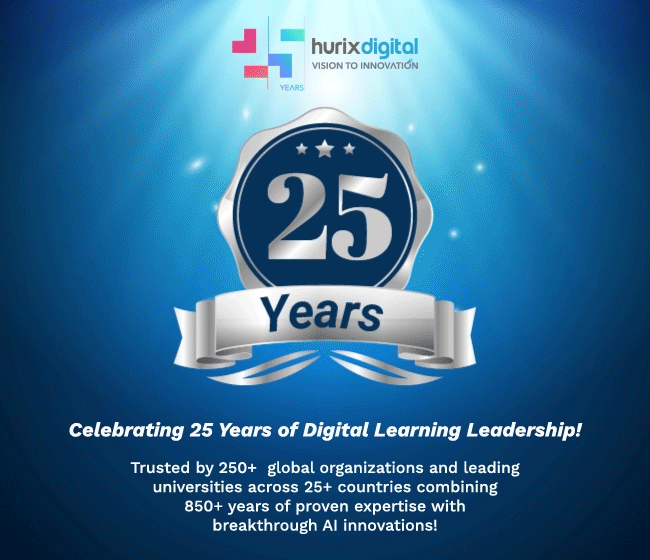
10 Best Practices in Online Course Development
Summarize with:
The key focus of online learning is to make the process of imparting and absorbing knowledge more engaging and effective. Since in an online setup, learning is mediated through technology, the success of any educational program rests primarily on the design and structure of the course. Poorly crafted courses can leave both students and instructors frustrated, resulting in confounded learning and an increase in dropout rates.
To steer clear of these pitfalls, it is essential to focus on micro-level actions such as the right apps and platforms, use of videos and other instructional aids, as well as macro-level actions such as accommodating different learning styles and time frames, establishing co-relations between theory and application.
Table of Contents:
Best Practices in Online Course Development
Here are 10 rules of thumb for online course development that will help you deliver on these micro and macro parameters to create a well-rounded curriculum for the virtual medium:
1. Know Your Students
Having a deep understanding of your target audience is critical for any curriculum creation process, more so for online course development as there is minimal scope for any inter-personal connection between instructors and students.
The foundation of a good online course is a specific insight into the persona of your average student – what is their level of education, what are their expectations from this course, what are their career goals, demographics, which languages are they well-versed in, what are their aspirations, and so on.
Also Read: 10 Reasons Why Institutions Should invest in Online Learning Programs
2. Web-Centric Design
In its nascent stages, online learning failed to make an impact corresponding to its potential, primarily because institutions and instructors could not understand what it meant to design a curriculum for the web. For the most part, people would transcribe their lectures from classroom courses into text for videos and PowerPoint presentations for the online ones.
The real power of learning in an online environment lies in its ability to leverage visuals, interactions, and experiences. Effective course design is one that understands this environment and caters to it.
3. Keep it Flexible
Flexibility is the hallmark of sound online course development, and to be able to embrace it, educationists have to first break free from the confines of classroom teaching and then relearn the ways of online learning. A flexible online course relies on an eclectic mix of activities and formats to create customized learning modules that deliver the same content in different ways to suit the intellect, aptitude, and time frame of an individual.
4. Functional Tools for Design Clarity
A well-rounded online course curriculum is one that leverages functional tools to accord ease of navigation and access. The clarity in design, coupled with intuitive arrangement of study materials, can help create an environment conducive to learning and help bolster satisfaction and outcome.
The role of technology in online learning has to go beyond a medium of delivery. It must be used as a learning aid unto itself with multi-channel avenues to help with understanding and application of complex ideas and concepts.
5. Transparency in Pedagogy
Clearly defining the methods of teaching is a fundamental step in developing a curriculum that delivers on the goals it is designed for. This holds as true for online course development as it is for classroom teaching.
Before you even consider putting together instructional material for a course, define its nature with precision – is it a purely online course? Or blended in its approach? Do you want to stick to any one specific model of teaching – be it connectivist, constructivist, or instructivist – or a mix of styles? There are no right or wrong answers here, but the context matters.
6. Extra Emphasis on Syllabus
If you look back at traditional classroom learning, the syllabus of a subject for a particular term or academic year was the first thing that the teacher discussed. This was often followed by elaborate discussions or Q & A sessions. In an online setup, this all-important process cannot be replicated.
It becomes imperative for those developing the course curriculum to place extra emphasis on the syllabus, elaborating different points where necessary, pre-empting the problem areas and providing solutions beforehand to ensure students can wrap their head around what’s in store for them.
7. Different Strokes for Different Systems
An online curriculum cannot be designed with a one-size-fits-all approach because web pages interact with different browsers differently. The same is true of different devices and platforms.
Your online instructional material may not open the same way on a Mozilla Firefox browser as it does on Google Chrome. An app will need to be written differently for Android and iOS. It’s always a good idea to check which templates work best on different platforms and use them accordingly.
Also Read: Online Learning Programs: Why Every Institution is Going Digital
8. Don’t Compromise on Consistency
Patterns stoke a sense of familiarity and familiarity makes us comfortable. This intrinsic human nature finds an extension in our online behavior as well. Whenever you visit an old app or website, you look for buttons and icons in the same places where you are used to seeing them.
The same applies to online learning platforms as well. So, it is crucial to create a set template and stick to it consistently to help your learners make the most of the resources you are offering. Any unexpected changes can cause them to miss out on vital content and assignments.
9. Mix it Up
One of the biggest drawbacks of traditional classroom learning is a clear demarcation between learning and engagement. A teacher delivers a lecture, and then the students engage with study material through exercises, Q&A, homework, and so on. However, this model of teaching has been found to be ineffective in helping students commit the new knowledge to their long-term memory.
In online learning, you really have immense scope for mixing activities with content – placing worksheets, video tutorials, assignments at the end of each section of a chapter, for instance – and it must be a key cornerstone of online course development to make it more effective.
10. Listen to the Experts
Being experts of their subject matter, teaching faculty often place the onus of developing every single aspect of the curriculum on their own. However, online course development goes above and beyond the nature of the content.
It must include a variety of media, be interactive in nature, and offer an impeccable support system to sustain online learning. It is always advisable to rope in experts to take care of the job for you.
The faculty can, of course, pitch in by helping these experts curate content curriculum that matches the objectives of the course.
Online Course Development – A Dynamic World
Online learning in itself is a dynamic process, and so is course development for this medium. To create learning modules that add value to learners in this fast-paced and fast-changing world, you must be open to embracing change and keep learning to be able to deliver a differentiated learning experience.
Get in touch with us today to learn more!
Summarize with:

Senior Vice President
A Business Development professional with >20 years of experience with strong capability to sell new solutions and develop new markets from scratch. New Market Entry Specialist with experience working in the largest emerging markets. Exceptional experience in conceptualizing, ideating and selling new learning technologies like VR AR, etc. across multiple industry verticals.
 We’re live! Explore the all-new
We’re live! Explore the all-new 





